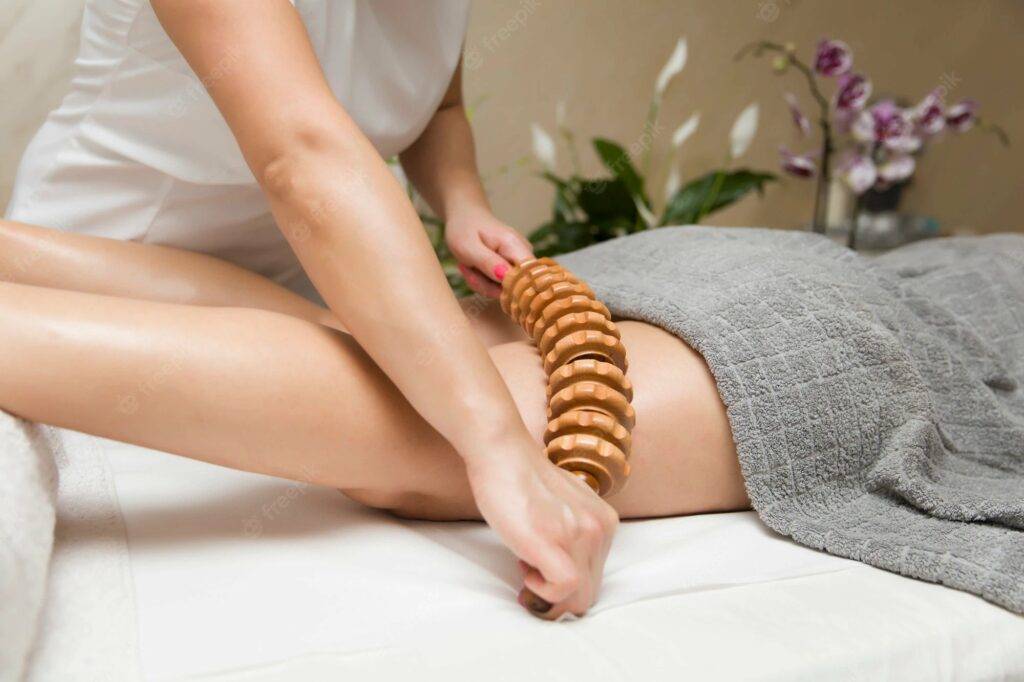In recent years, Maderotherapy, or wood therapy, has gained significant popularity as a natural, non-invasive treatment for body sculpting, cellulite reduction, and overall wellness.
While many consider it a modern innovation, its roots extend deep into ancient civilizations. This blog post explores the historical and cultural origins of Maderotherapy, tracing its evolution from ancient practices to contemporary therapeutic applications.
The Historical Roots of Maderotherapy
Ancient Civilizations and the Use of Wood
The use of wood for therapeutic purposes dates back thousands of years. Ancient civilizations revered wood for its practical applications in daily life and its healing properties.
In traditional Chinese medicine, wooden tools were used to stimulate acupuncture points and promote energy flow throughout the body.
Similarly, in ancient Egypt, wooden implements were crafted for massage and ceremonial purposes, believed to harness the natural energy of the wood to enhance the body’s healing processes.
Indigenous Practices
Indigenous cultures worldwide have long understood the therapeutic benefits of wood. Native American tribes used wooden sticks and stones for massage and healing rituals.
They believed that the natural elements carried the spirit of the earth, which could transfer healing energy to the body. In Africa, traditional healers employed wooden tools to alleviate pain, improve circulation, and restore balance to the body and mind.
The Evolution of Maderotherapy
The Renaissance of Wood Therapy
The Renaissance period saw a revival of interest in natural therapies, including the use of wood for health and wellness. European practitioners began documenting and refining techniques using wooden therapeutic massage tools.
These practices were often passed down through generations, preserving the knowledge and skills required to harness the benefits of wood therapy.
Modern Maderotherapy
The modern form of Maderotherapy as we know it today began to take shape in the 20th century. The technique was formalized in South America, particularly in Colombia, where practitioners developed specialized wooden instruments designed for various therapeutic purposes.
These tools were crafted to fit the contours of the human body, allowing for precise and effective treatment of problem areas.

Cultural Significance of Maderotherapy
Symbolism and Spirituality
Throughout history, wood has held significant symbolic and spiritual meaning in many cultures. Trees are often seen as symbols of life, growth, and renewal. Using wooden tools in therapy is thought to transfer these positive attributes to the individual, promoting physical and emotional well-being.
In some cultures, the specific type of wood carries its unique symbolism and healing properties. For example, oak is associated with strength and endurance, while willow is linked to flexibility and resilience.
Ritualistic Practices
In many cultures, using wooden tools in therapy is embedded in ceremonial practices. These rituals often involve specific techniques, chants, or prayers to enhance the therapeutic effects. The combination of physical manipulation and spiritual elements creates a holistic approach to healing that addresses both the body and the mind.
Contemporary Applications of Maderotherapy
Body Sculpting and Cellulite Reduction
Maderotherapy is widely recognized for its effectiveness in body sculpting and cellulite reduction. The specialized wooden tools apply targeted pressure to the skin and underlying tissues, breaking down fat deposits and promoting lymphatic drainage. This results in smoother, more toned skin and a reduction in the appearance of cellulite.
Holistic Wellness
Beyond its aesthetic benefits, Maderotherapy is valued for its holistic wellness applications. The deep tissue massage provided by the wooden tools helps to relieve muscle tension, improve circulation, and enhance relaxation.
Many practitioners incorporate aromatherapy and energy healing into their sessions, creating a comprehensive treatment that nurtures the body, mind, and spirit.
The Future of Maderotherapy
As interest in natural and holistic therapies continues to grow, the future of Maderotherapy looks promising. Innovations in tool design and technique are continually emerging, expanding the potential applications of this ancient practice.
From its humble beginnings in the forests of ancient civilizations to the modern therapy rooms of today, Maderotherapy remains a testament to the enduring power of natural healing.
In conclusion, the journey of Maderotherapy from ancient rituals to contemporary wellness practices highlights the timeless appeal and effectiveness of using natural materials for health and beauty.
As we continue to embrace and refine these traditional techniques, Maderotherapy will undoubtedly remain a valuable tool in the pursuit of holistic well-being.

